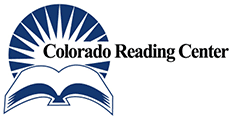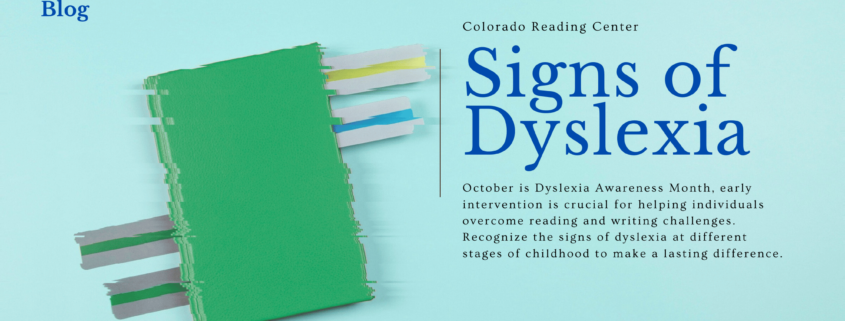Early Detection and Signs of Dyslexia
Identifying Dyslexia from Preschool to High School: Key Signs and Early Intervention

Dyslexia is one of the most common learning differences, affecting as many as 1 in 5 children in the United States. Since early intervention is crucial for helping individuals overcome reading and writing challenges, recognizing the signs of dyslexia at different stages of childhood can make a lasting difference. While dyslexia doesn’t go away, understanding its early markers helps children receive appropriate interventions to succeed academically and personally.
Signs at Every Stage
Many children with dyslexia go undiagnosed, especially if they are bright and develop coping strategies early on. This makes it essential for parents, educators, and healthcare providers to understand the signs of dyslexia and seek intervention early.
Dyslexia can affect children at all stages of their education, from preschool through high school, with different challenges emerging at each level. While every child is different, there are common signs to look out for. Recognizing these signs early allows for timely intervention, which can make a world of difference in a child’s academic and personal life.
Preschool (Ages 3–5): Early Language and Pre-Reading Skills
Dyslexia can begin to show as early as preschool. Although children at this stage are not yet reading, there are language and early literacy indicators that may suggest a child is at risk for dyslexia.
Signs to Look For:
- Delayed speech development compared to peers
- Difficulty learning new words or naming familiar objects
- Trouble recognizing rhyming patterns (e.g., cat, hat, bat)
- Challenges in remembering or learning the alphabet or letter names
- Difficulty in understanding or following simple directions
Preschoolers with dyslexia might struggle with phonemic awareness, which is the ability to recognize and manipulate sounds in words. This can result in difficulties with rhyming or segmenting words into syllables—skills that are fundamental for reading later on.
Elementary School (Ages 6–11): Learning to Read and Write
Elementary school is typically when dyslexia becomes more apparent because children are expected to begin reading, writing, and spelling with increasing proficiency. At this stage, children with dyslexia may begin to fall behind their peers in these areas.
Signs to Look For:
- Difficulty decoding (sounding out) words
- Slow or inaccurate reading
- Poor spelling, often with phonetic errors (e.g., writing “fot” instead of “foot”)
- Difficulty learning high-frequency sight words (e.g., “the,” “and,” “said”)
- Avoiding reading aloud or reading for pleasure
- Trouble organizing thoughts for writing, especially at the sentence or paragraph level
- Problems with handwriting or letter formation (dysgraphia may also co-occur)
Children in this age group may also struggle with reading fluency, reading comprehension, and retaining information they’ve read. Dyslexia at this stage can cause significant frustration, leading children to avoid reading and writing tasks.
Middle School (Ages 11–14): Increased Academic Demands
As children move into middle school, the academic demands increase, and the emphasis shifts from learning to read to reading to learn. Students with dyslexia at this stage might struggle to keep up, especially in subjects that require extensive reading or written responses.
Signs to Look For:
- Reading significantly below grade level
- Difficulty understanding and summarizing text
- Avoidance of reading assignments, particularly longer or more complex texts
- Challenges with spelling and written composition
- Trouble organizing essays or written responses
- Slow reading speed, even for familiar texts
- Difficulty with oral language tasks, like reading aloud in class
Middle school students with dyslexia may find it harder to manage the volume of reading across subjects like history, science, and English. They may also have trouble keeping up with written assignments, even if they understand the material orally.
High School (Ages 14–18): Advanced Reading and Writing Challenges
By high school, the demands for independent learning, advanced reading comprehension, and essay writing increase. Students with dyslexia often face significant challenges, especially if they haven’t received adequate intervention earlier in their schooling.
Signs to Look For:
- Continuing difficulties with reading fluency and accuracy
- Struggles with advanced reading comprehension and analyzing complex texts
- Persistent spelling problems, particularly with less common or more complex words
- Difficulty planning and organizing long written assignments, such as research papers
- Avoidance of reading and writing tasks, leading to academic underachievement
- Slow reading speed that impairs the ability to complete assignments on time
- Low self-esteem or frustration due to academic struggles, despite putting in extra effort
At this stage, many high school students with dyslexia may have developed coping mechanisms, but these often break down as the workload increases. Without appropriate accommodations, such as extra time on tests, assistive technology, or structured literacy intervention, students may continue to struggle academically.

The Importance of Early Identification and Intervention
Early identification and intervention for dyslexia are critical for improving a child’s reading and writing skills, as well as their overall academic success. Research shows that the earlier dyslexia is identified, the more effective interventions can be in helping children close the achievement gap with their peers.
Effective interventions for dyslexia include:
- Structured literacy programs: These programs focus on systematic phonics instruction, teaching students how to decode and encode language using a multi-sensory approach.
- Individualized instruction: One-on-one tutoring tailored to the specific needs of the child can significantly improve reading skills.
- Assistive technology: Tools such as text-to-speech software, audiobooks, and word processors with spell check can support students with dyslexia, particularly in middle and high school.
Schools, parents, and specialists can work together to ensure that students receive the support they need, whether through formal IEPs (Individualized Education Plans) or 504 Plans that provide necessary accommodations and interventions.
Conclusion
Dyslexia is a lifelong condition, but with proper support, children and adolescents with dyslexia can thrive academically and personally. Recognizing the signs early—whether in preschool, elementary, middle, or high school—empowers parents and educators to provide timely, targeted interventions that make a real difference in a child’s life.
Sources:
- Shaywitz, Sally. Overcoming Dyslexia. Knopf Doubleday Publishing Group, 2003.
- International Dyslexia Association. “Dyslexia Basics.” IDA Website.
- Understood.org. “Signs of Dyslexia at Different Ages.” Understood Website.
- The Yale Center for Dyslexia & Creativity. “Dyslexia: What It Is, and Isn’t.” Yale Dyslexia.
- National Institute of Child Health and Human Development (NICHD). “What is Dyslexia?” NICHD Website.






